Home> Company News> Maintaining and Servicing Your KPM Hydraulic Pump for Optimal Performance
- AddressToh Guan Centre, 31/F,69 Toh Guan Rd E, Singapore 608609
- Factory AddressToh Guan Centre, 31/F,69 Toh Guan Rd E, Singapore 608609
- Worktime9:00-18:00
- Phone(Working Time)0065-31591578
- Phone(Nonworking Time)0065-31591578
- Fax0065-31591339
Maintaining and Servicing Your KPM Hydraulic Pump for Optimal Performance
2023-04-25 14:12:08Hydraulic pumps are essential components in many industrial applications, from construction and agriculture to manufacturing and mining. They are responsible for converting mechanical power into hydraulic power, which drives a variety of machines and equipment. Among the many hydraulic pump manufacturers in the market, KPM is known for its high-quality and reliable products.
In this article, we will discuss KPM hydraulic pumps and their advantages. We will also highlight the importance of maintenance and servicing for optimal pump performance. By understanding the features and benefits of KPM hydraulic pumps, as well as the best practices for maintenance and troubleshooting, readers will be able to maximize their hydraulic systems' efficiency and lifespan.

kpm hydraulic pumps
Understanding KPM Hydraulic Pumps
KPM is a leading manufacturer of hydraulic pumps that are designed to meet the needs of a variety of industrial applications. KPM offers a range of hydraulic pumps, including gear pumps, vane pumps, and piston pumps, each with its unique advantages and applications.
Gear pumps are a popular choice due to their simplicity and reliability. They are capable of handling a wide range of viscosities and pressures, making them ideal for a variety of applications. Vane pumps, on the other hand, offer higher efficiency and lower noise levels. They are commonly used in applications that require precise control and high pressure.
Piston pumps are a high-performance option that can handle extreme pressures and flow rates. They are typically used in heavy-duty applications, such as in the construction and mining industries. KPM's piston pumps are available in both axial and radial designs, giving customers the flexibility to choose the best option for their specific needs.
Overall, KPM's hydraulic pumps are designed with durability and reliability in mind. They are built to withstand even the harshest operating conditions and are backed by a team of experts who can provide support and service to ensure optimal performance.
Maintenance and Servicing
KPM hydraulic pumps are built to last and provide reliable performance for various industrial applications. However, regular maintenance and servicing are necessary to ensure that the pumps operate efficiently and have a long lifespan. Failure to perform regular maintenance can result in decreased performance, increased downtime, and costly repairs.
The first step in maintaining a KPM hydraulic pump is to familiarize yourself with the manufacturer's guidelines for maintenance and servicing. These guidelines typically include information on recommended maintenance schedules, inspection procedures, and specific tasks to be performed during each maintenance interval.
One of the most important tasks in maintaining a hydraulic pump is to regularly check and replace the pump's oil. Over time, oil can become contaminated with dirt, debris, and other contaminants, which can damage the pump's internal components. It is recommended to replace the oil every 3 to 6 months, depending on the pump's usage and the manufacturer's recommendations.
Another crucial task in maintaining KPM hydraulic pumps is to inspect and replace the pump's filters. Filters prevent contaminants from entering the hydraulic system and causing damage. Over time, filters can become clogged with dirt and debris, reducing the pump's efficiency and causing damage. It is recommended to inspect filters regularly and replace them as needed.
In addition to these basic maintenance tasks, there are several other steps you can take to ensure optimal performance from your KPM hydraulic pump. These include keeping the pump clean and free of debris, checking for leaks, inspecting seals and gaskets, and ensuring that all connections and fittings are tight and secure.
Regular servicing of KPM hydraulic pumps should be performed by qualified professionals who have experience working with hydraulic systems. A professional hydraulic technician can identify potential issues early on and perform repairs and maintenance tasks in a timely and efficient manner.
In summary, regular maintenance and servicing are essential for ensuring optimal performance and longevity of KPM hydraulic pumps. By following manufacturer's guidelines and performing routine maintenance tasks, you can keep your hydraulic pumps running smoothly and avoid costly downtime and repairs.
Troubleshooting KPM Hydraulic Pumps
Despite proper maintenance, issues can still occur with KPM hydraulic pumps. It is important to be able to identify and troubleshoot these problems in a timely manner to avoid potential downtime and costly repairs. Here are some common problems that may occur with KPM hydraulic pumps and how to diagnose and fix them:
-
Pump fails to operate or operates at reduced capacity: One possible cause could be a clogged inlet filter. Check the filter and clean or replace it as necessary. Another possibility is a worn or damaged pump element. Inspect the element and replace it if necessary.
-
Pump is making unusual noises: Unusual noises, such as knocking or clunking, may indicate that there is air in the system. Check the system for air pockets and bleed the system as necessary. A damaged or worn pump element could also be the cause of unusual noises. Inspect the element and replace it if necessary.
-
Excessive pump leakage: Excessive leakage can be caused by worn or damaged seals. Inspect the seals and replace them if necessary. Another possible cause of excessive leakage is a damaged pump element. Inspect the element and replace it if necessary.
-
Pump is overheating: Overheating can be caused by a variety of factors, such as a clogged inlet filter, high system pressure, or a damaged pump element. Check the filter and clean or replace it as necessary. Check the system pressure and adjust it as needed. Inspect the element and replace it if necessary.
-
Pump is vibrating excessively: Excessive vibration can be caused by misalignment, worn or damaged bearings, or a damaged pump element. Inspect the bearings and replace them if necessary. Check the alignment of the pump and correct it as needed. Inspect the element and replace it if necessary.
It is important to address any issues with KPM hydraulic pumps as soon as possible to avoid potential system failure and costly repairs. If you are unsure how to diagnose or fix a problem with your KPM hydraulic pump, it is recommended to consult with a qualified technician.
Techniques for Optimizing KPM Hydraulic Pump Performance
KPM hydraulic pumps are designed to provide high efficiency and reliable performance in a wide range of industrial applications. However, like any other hydraulic equipment, KPM hydraulic pumps require regular maintenance and optimization to ensure that they operate at peak performance. Below are some techniques for optimizing KPM hydraulic pump performance:
-
Proper Sizing: KPM hydraulic pumps should be properly sized to ensure that they are not overworked or underutilized. When selecting a KPM hydraulic pump, it is essential to consider the maximum operating pressure, flow rate, and horsepower required for the specific application. Proper sizing helps to prevent pump failure and prolongs the pump's lifespan.
-
Use Appropriate Fluids: KPM hydraulic pumps are designed to work with specific types of hydraulic fluids. It is crucial to use the appropriate fluids to ensure optimal performance and prevent damage to the pump. Using the wrong fluid can cause cavitation, corrosion, and other issues that can reduce pump performance and cause premature failure.
-
Cleanliness: The cleanliness of the hydraulic fluid is critical to the performance and lifespan of the KPM hydraulic pump. Contaminants such as dirt, debris, and moisture can cause wear and tear on the pump's components, leading to reduced efficiency and increased downtime. To maintain cleanliness, it is recommended to use high-quality hydraulic fluids and change the fluid regularly.
-
Preventative Maintenance: Regular maintenance and inspections help to prevent pump failure and optimize performance. Maintenance tasks may include changing filters, checking fluid levels, and inspecting hoses and connections. By identifying and addressing potential issues early, operators can prevent costly repairs and minimize downtime.
-
Temperature Control: KPM hydraulic pumps are sensitive to temperature changes. Extreme temperatures can cause the fluid to break down, reduce pump efficiency, and lead to premature failure. Maintaining the fluid within the recommended temperature range can improve pump performance and prolong the pump's lifespan.
-
Energy Efficiency: KPM hydraulic pumps are designed to be energy-efficient. Optimizing pump performance can reduce energy consumption and lower operating costs. Techniques for optimizing energy efficiency may include reducing flow rates when possible, using variable frequency drives, and minimizing pressure drops in the hydraulic system.
By following these techniques, operators can optimize the performance of their KPM hydraulic pumps, reduce downtime, and extend the pump's lifespan. Regular maintenance, proper sizing, appropriate fluid use, temperature control, and energy efficiency are all critical factors to consider when optimizing KPM hydraulic pump performance.
 kpm hydraulic pumps
kpm hydraulic pumps
KPM Hydraulic Pump Replacement
When it comes to KPM hydraulic pumps, they are designed to be reliable and efficient for use in a variety of industrial applications. However, over time, wear and tear can lead to decreased performance and eventual failure of the pump. In such cases, replacing the pump may be necessary.
Here are some signs that it may be time to replace a KPM hydraulic pump:
-
Frequent breakdowns or repairs: If your KPM hydraulic pump is breaking down frequently or requiring frequent repairs, it may be a sign that it's time to replace the pump.
-
Decreased performance: If you notice that your KPM hydraulic pump is not providing the same level of performance as before, it could be a sign that the pump is wearing out and needs to be replaced.
-
Increased noise: If your KPM hydraulic pump is making more noise than usual, it may be a sign that the pump is wearing out and needs to be replaced.
-
Leaks: If you notice leaks around your KPM hydraulic pump, it may be a sign that the pump is damaged and needs to be replaced.
When it comes to replacing a KPM hydraulic pump, it's important to follow certain steps:
-
Identify the right replacement pump: Before you can replace a KPM hydraulic pump, you need to identify the right replacement pump. This involves selecting a pump that is the right size and type for your application.
-
Remove the old pump: Once you have identified the right replacement pump, you need to remove the old pump from your system. This involves disconnecting any hoses or fittings that are attached to the pump.
-
Install the new pump: Once the old pump has been removed, you can install the new pump. This involves connecting any hoses or fittings to the new pump and securing it in place.
-
Test the new pump: After the new pump has been installed, it's important to test it to ensure that it's functioning properly. This involves running the pump and checking for any leaks or other issues.
When selecting a new KPM hydraulic pump, it's important to consider factors such as:
-
Flow rate: The flow rate of the pump should be matched to the requirements of your application.
-
Operating pressure: The pump should be capable of operating at the required pressure levels for your application.
-
Pump type: There are several types of KPM hydraulic pumps available, and you should choose the one that best fits your application.
Overall, replacing a KPM hydraulic pump is a necessary part of maintaining your hydraulic system. By following the proper steps and considering important factors, you can ensure that your system continues to operate at its best.
Safety Considerations
Hydraulic pumps are powerful machines that can pose a significant risk to workers if not handled properly. It is important to follow best practices to stay safe during maintenance and servicing.
One of the most critical safety considerations is to always turn off the hydraulic pump and release any stored pressure before beginning any maintenance or repair work. This can prevent serious injury or damage to equipment.
It is also important to wear appropriate personal protective equipment (PPE), such as gloves, eye protection, and steel-toed boots. Workers should be trained on proper PPE use and maintenance.
Proper training and certification for working with hydraulic pumps is essential to ensure the safety of workers. Workers should be trained on the safe operation and maintenance of hydraulic pumps, as well as proper lifting and rigging techniques.
Other safety considerations include:
- Keeping the work area clean and free of clutter
- Avoiding loose clothing or jewelry that can become caught in moving parts
- Using caution when handling hydraulic fluid, which can be hot and under pressure
- Avoiding the use of damaged or worn equipment
Regular safety audits and inspections can help identify potential hazards and ensure that all safety protocols are being followed.
By following proper safety procedures, workers can help prevent accidents and injuries and ensure that hydraulic pump maintenance and servicing is performed safely and efficiently.
Conclusion
KPM hydraulic pumps are essential components in a wide range of industrial applications, and their reliable and efficient performance is critical to the success of many operations. Proper maintenance and servicing are crucial for ensuring the longevity and optimal performance of KPM hydraulic pumps.
In conclusion, it is important to regularly check and maintain KPM hydraulic pumps to ensure they operate effectively and safely. This includes monitoring for signs of wear and tear, identifying and addressing any issues as they arise, and following best practices for servicing and replacement.
By following the tips and techniques outlined in this article, operators can increase the efficiency and lifespan of their KPM hydraulic pumps, as well as reduce the risk of costly downtime and repairs. Additionally, it is crucial to prioritize safety when working with hydraulic pumps and ensure that all workers are trained and certified in their operation and maintenance.
Overall, KPM hydraulic pumps continue to be a reliable and versatile choice for industrial applications, and with proper maintenance and care, they can continue to provide excellent performance and value for many years to come.
Mud pump bearings Turntable bearings Agricultural bearings Angular Contact Bearings Duplex Angular Contact Bearings Industrial bearings Iron and steel industry bearings Power transmission bearing Hydrostatic centripetal bearing Ball Thrust Bearings Papermaking Machinery bearings Agricultural machinery bearing McGILL bearing Rexroth pump assay Komatsu motor parts BOSCH Fuel injector Hitachi excavator parts Axial Piston Pumps Sauer Danfoss pump Eaton pump parts Nachi pump assay Linde pump Mining Construction Ball Bearings Linear Bearings vane pumps gear pumps inc piston pumps Thin-Section Ball Bearings Adapter Sleeves pressure valves gear reducer relief valves Mcgill Bearing Die & Mold Plain-Bearing Bushings FAG Bearing Singapore SKF bearing Accessories SKF bearing Housing SKF bearing shaft seals SKF Bearing units Bearing Distributors Inventory Oilfield mud pump bearings Heavy-Duty Shaker Screen Spherical Double row double row tapered roller bearings (inch series) Multi-Row Roller Bearings NTN Four Row Cylindrical Roller Bearings NTN SL Type Cylindrical Roller Bearings NTN SL Type Cylindrical Roller Bearings for Sheaves NTN Single Row Tapered Roller Bearings NTN Double Row Tapered Roller Bearings NTN Four Row Tapered Roller Bearings NTN Spherical Roller Bearings NTN Thrust Bearings NTN Bearings for special applications NTN DOUBLE-ROW CYLINDRICAL ROLLER BEARINGS NSK FULL-COMPLEMENT CYLINDRICAL ROLLER BEARINGS NSK SINGLE-ROW TAPERED ROLLER BEARINGS NSK YUKEN Piston pump DOUBLE-ROW TAPERED ROLLER BEARINGS NSK SPHERICAL ROLLER BEARINGS NSK SINGLE-DIRECTION THRUST BALL BEARINGS NSK CYLINDRICAL ROLLER THRUST BEARINGS NSK TAPERED ROLLER THRUST BEARINGS NSK SPHERICAL THRUST ROLLER BEARINGS NSK ROLLING BEARINGS FOR STEEL MILLS NSK SEALED-CLEAN FOUR-ROW TAPERED ROLLER BEARINGS NSK FOUR-ROW CYLINDRICAL ROLLER BEARINGS NSK DOUBLE-ROW TAPERED ROLLER BEARINGS NSK Roll Bearings for Mills NSK Ball Bearings NSK TAPERED ROLLER THRUST BEARINGS For Adjusting Screws NSK Thin Section Bearings Kaydon Double row double row tapered roller bearings (inch series) Double direction thrust tapered roller bearings Full complement Tapered roller Thrust bearing Thrust cylindrical roller bearings Thrust spherical roller bearings Sealed Four Row Tapered Roller Bearings Four row tapered roller bearings Double outer double row tapered roller bearings TDO double-row tapered roller bearings Single row tapered roller bearings inch Double inner double row tapered roller bearings TDI Double inner double row tapered roller bearings inch Spherical roller bearing Four row cylindrical roller bearings Single row cylindrical roller bearings Full row of cylindrical roller bearings Double row cylindrical roller bearings Double row full complement cylindrical roller bearings Four point contact ball bearings Double row angular contact ball bearings Deep groove ball bearings ANGULAR CONTACT THRUST BALL BEARINGS TYPE TVL DTVL angular contact thrust ball bearing. TP thrust cylindrical roller bearing TPS thrust cylindrical roller bearing THRUST SPHERICAL ROLLER BEARINGS TYPES TSR-EJ AND TSR-EM TTHD THRUST TAPERED ROLLER BEARINGS TTHDFL thrust tapered roller bearing TTHDFLSA THRUST TAPERED ROLLER BEARINGS THRUST TAPERED ROLLER BEARINGS TYPES TTSP, TTSPS AND TTSPL THRUST TAPERED ROLLER BEARINGS – TYPES TTC, TTCS AND TTCL SCREWDOWN BEARINGS – TYPES TTHDSX/SV AND TTHDFLSX/SV THRUST TAPERED ROLLER BEARING TYPES TTDWK AND TTDFLK CROSSED ROLLER BEARINGS TXR Tapered Roller bearings double-row • Type TDO Tapered Roller bearings double-row TDI TDIT Tapered Roller Bearings double-row TNA Tapered Roller Bearings double-row TNASWE Tapered Roller Bearings double-row Spacer assemblies TTVS TTSP TTC TTCS TTCL tapered roller thrust BEARINGS Heavy-Duty Shaker Screen Spherical Roller Bearings Timken SPHERICAL ROLLER BEARINGS CYLINDRICAL ROLLER BEARINGS ONE-ROW METRIC ISO SERIES CYLINDRICAL ROLLER BEARINGS one-row STANDARD SERIES CYLINDRICAL ROLLER BEARINGS FULL-COMPLEMENT NCF CYLINDRICAL ROLLER BEARINGS TWO-Row Four-Row Cylindrical Roller Bearings CYLINDRICAL ROLLER BEARINGS HJ SERIES CYLINDRICAL ROLLER BEARINGS 5200 A5200 metric series HeavY-duty needle roller bearings four-row cylindrical roller Bearing assembly four-row cylindrical roller Bearing inner ring Outer assembly four-row tapered roller Bearings • tQow – 2tdiw Timken Sealed roll neck Bearings four-row tapErEd rollEr BEaringS tQitS TnasWH TWo-roW TaPered roller bearings TdiT TnaT two-row tapErEd rollEr BEaringS tdik THrusT TaPered roller bearings TTdFlk, TTdW and TTdk bearings screwdown systems thrust tapered rollEr Bearings Thrust spherical roller bearing Mud pump bearings TOKYO-KEIKI piston pump TOKYO-KEIKI vane pump DAIKIN piston pump DAIKIN vane pump DAIKIN Rotor pump VICKERS Piston pump Vickers vane pump VICKERS gear pump NACHI gear pump NACHI piston pump Rexroth A1VO Rexroth A10VSO Rexroth AA4VSO Rexroth A15VSO Rexroth AZPF parker PV piston pump parker PVP piston pump parker PAVC piston pump parker vane pump Multi-Row Roller Bearings NTN Four Row Cylindrical Roller Bearings NTN SL Type Cylindrical Roller Bearings NTN SL Type Cylindrical Roller Bearings for Sheaves NTN Single Row Tapered Roller Bearings NTN Double Row Tapered Roller Bearings NTN Four Row Tapered Roller Bearings NTN Spherical Roller Bearings NTN Thrust Bearings NTN Bearings for special applications NTN DOUBLE-ROW CYLINDRICAL ROLLER BEARINGS NSK FULL-COMPLEMENT CYLINDRICAL ROLLER BEARINGS NSK SINGLE-ROW TAPERED ROLLER BEARINGS NSK YUKEN Piston pump DOUBLE-ROW TAPERED ROLLER BEARINGS NSK SPHERICAL ROLLER BEARINGS NSK SINGLE-DIRECTION THRUST BALL BEARINGS NSK CYLINDRICAL ROLLER THRUST BEARINGS NSK TAPERED ROLLER THRUST BEARINGS NSK SPHERICAL THRUST ROLLER BEARINGS NSK ROLLING BEARINGS FOR STEEL MILLS NSK SEALED-CLEAN FOUR-ROW TAPERED ROLLER BEARINGS NSK FOUR-ROW CYLINDRICAL ROLLER BEARINGS NSK DOUBLE-ROW TAPERED ROLLER BEARINGS NSK Roll Bearings for Mills NSK CROSSED-ROLLER BEARINGS NSK Ball Bearings NSK TAPERED ROLLER THRUST BEARINGS For Adjusting Screws NSK Roller Bearings NSK Thin Section Bearings Kaydon Double row double row tapered roller bearings (inch series) Double direction thrust tapered roller bearings Full complement Tapered roller Thrust bearing Thrust cylindrical roller bearings Thrust spherical roller bearings Sealed Four Row Tapered Roller Bearings Four row tapered roller bearings Double outer double row tapered roller bearings TDO double-row tapered roller bearings Single row tapered roller bearings inch Double inner double row tapered roller bearings TDI Single row tapered roller bearings Double inner double row tapered roller bearings inch Split spherical roller bearings Spherical roller bearing Four row cylindrical roller bearings Single row cylindrical roller bearings Full row of cylindrical roller bearings Double row cylindrical roller bearings Double row full complement cylindrical roller bearings Four point contact ball bearings Double row angular contact ball bearings Deep groove ball bearings ANGULAR CONTACT THRUST BALL BEARINGS TYPE TVL DTVL angular contact thrust ball bearing. TP thrust cylindrical roller bearing TPS thrust cylindrical roller bearing THRUST SPHERICAL ROLLER BEARINGS TYPES TSR-EJ AND TSR-EM TTHD THRUST TAPERED ROLLER BEARINGS TTHDFL thrust tapered roller bearing TTHDFLSA THRUST TAPERED ROLLER BEARINGS THRUST TAPERED ROLLER BEARINGS TYPES TTSP, TTSPS AND TTSPL THRUST TAPERED ROLLER BEARINGS – TYPES TTC, TTCS AND TTCL SCREWDOWN BEARINGS – TYPES TTHDSX/SV AND TTHDFLSX/SV THRUST TAPERED ROLLER BEARING TYPES TTDWK AND TTDFLK CROSSED ROLLER BEARINGS TXR Tapered Roller bearings double-row • Type TDO Tapered Roller bearings double-row TDI TDIT Tapered Roller Bearings double-row Spacer assemblies TTVS TTSP TTC TTCS TTCL tapered roller thrust BEARINGS Heavy-Duty Shaker Screen Spherical Roller Bearings Timken SPHERICAL ROLLER BEARINGS CYLINDRICAL ROLLER BEARINGS ONE-ROW METRIC ISO SERIES CYLINDRICAL ROLLER BEARINGS one-row STANDARD SERIES CYLINDRICAL ROLLER BEARINGS FULL-COMPLEMENT NCF CYLINDRICAL ROLLER BEARINGS TWO-Row Four-Row Cylindrical Roller Bearings CYLINDRICAL ROLLER BEARINGS HJ SERIES CYLINDRICAL ROLLER BEARINGS 5200 A5200 metric series HeavY-duty needle roller bearings four-row cylindrical roller Bearing assembly four-row cylindrical roller Bearing inner ring Outer assembly Timken Sealed roll neck Bearings four-row tapErEd rollEr BEaringS tQitS TnasWH TWo-roW TaPered roller bearings TdiT TnaT two-row tapErEd rollEr BEaringS tdik THrusT TaPered roller bearings TTdFlk, TTdW and TTdk bearings screwdown systems thrust tapered rollEr Bearings Thrust spherical roller bearing Mud pump bearings TOKYO-KEIKI piston pump TOKYO-KEIKI vane pump YUKEN vane pump DAIKIN piston pump DAIKIN vane pump DAIKIN Rotor pump VICKERS Piston pump Vickers vane pump VICKERS gear pump NACHI gear pump NACHI piston pump Rexroth A1VO Rexroth A10VSO Rexroth AA4VSO Rexroth A15VSO Rexroth AZPF parker PV piston pump parker PVP piston pump parker PAVC piston pump Main pump

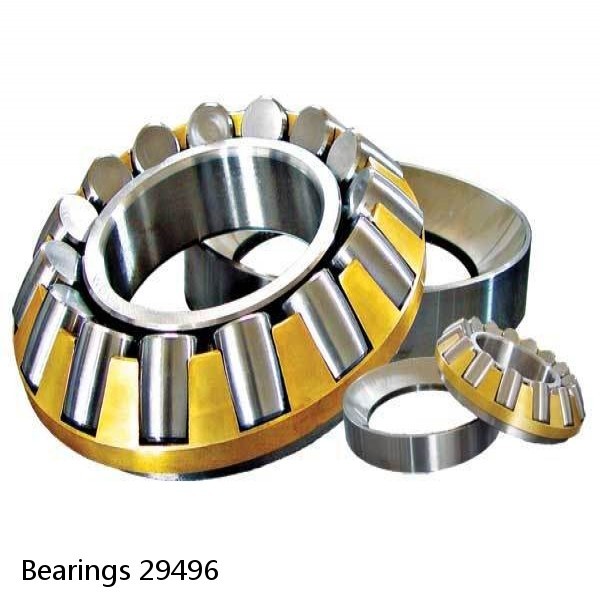 Bearings 29496
Bearings 29496 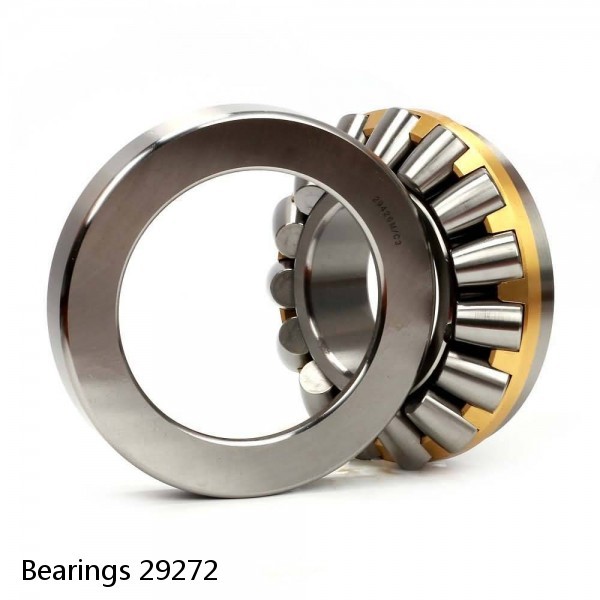 Bearings 29272
Bearings 29272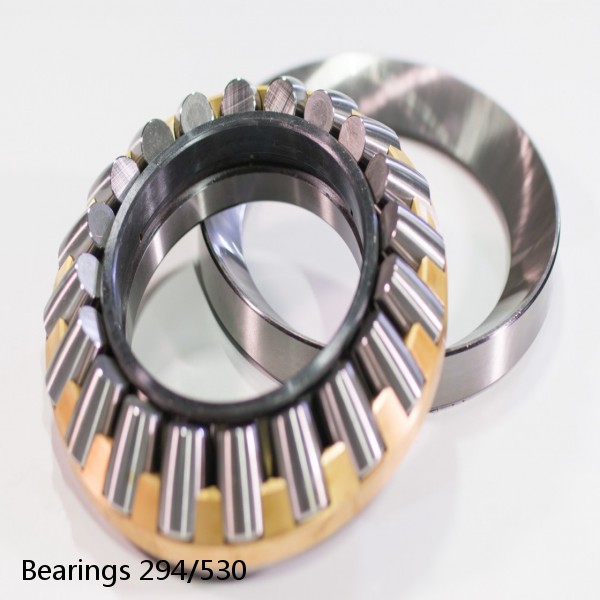 Bearings 294/530
Bearings 294/530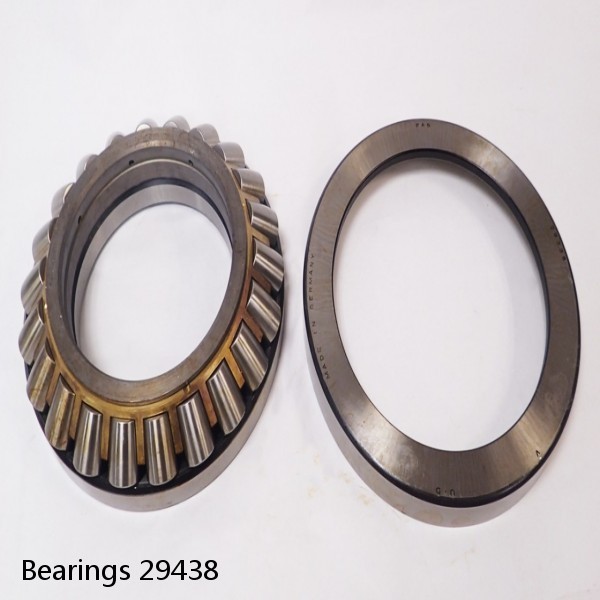 Bearings 29438
Bearings 29438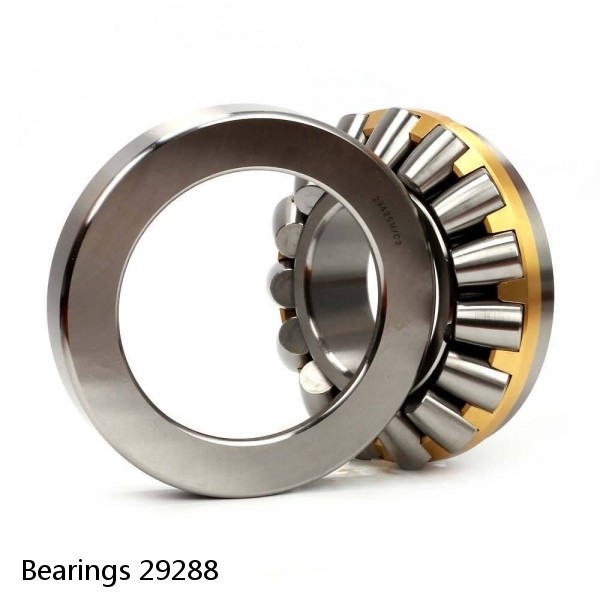 Bearings 29288
Bearings 29288